Preparing Raw Food

Step 1: Clean It

Preparing raw food You need to prepare a wide variety of raw foods to make even the simplest of foods. The first step to preparing raw food is to:
CLEAN IT
Some recipes detail every preparation task but many assume you’ve already done some basic tasks such as cleaning the work area and the food you are going to prepare. Washing ingredients is one of the first and simplest preparation tasks. All vegetables need washing to remove soil and chemicals from the skins, insects from the leaves and residue from the people who handle the food in the supply line from growing to retail sale.
FOOD ITEM and CLEANING METHOD
Root Vegetable (e.g., potato, turnip) - Needs to be cleaned if the recipe does not require them to be peeled. Thoroughly scrub with a stiff vegetable brush and then rinse until completely clean.
Leafy Vegetable (e.g., lettuce, spinach) - Soak and wash in a bowl of clean water, drain and repeat until there is no evidence of dirt, insects or other impurities. Leeks will need to be split down the centre or pulled apart to remove all the dirt that will be trapped.
Fruit - Wash whole fruit with clean water if the skin is retained in the cooking process.
Meat - Use a sharp knife to cut away inedible and undesirable parts such as excess fat, sinew and blood vessels while retaining the edible meat portion. Wash the internal cavity of whole poultry to remove intestinal residue.

Step 2: Peel or Trim It

PEEL IT
During preparation, you may need to remove the skins of fruit and vegetables. To minimise waste and retain valuable nutrients, use a sharp vegetable peeler to peel items as quickly and thinly as possible. Do this as close to cooking or service time as practical to prevent drying.
Some fruit and vegetables turn brown when peeled and exposed to oxygen. To prevent this, treat items such as avocados, apples and artichokes with an acid solution like lemon juice or vinegar. Keep potatoes and eggplant under cold water ready for use. Use a sharp knife when peeling vegetables with thick skins (pumpkin, turnips, etc.). Be careful as knives can easily slip when you apply pressure. Keep your fingers well out of harm’s way and always cut away from your body.
Tools used for peeling:TRIM IT
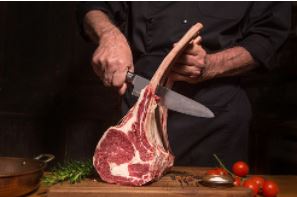

Step 3: Slice It
Presentation is a key element in many foods. Pay particular attention to the cutting and shaping of all ingredients. Slice in a consistent, attractive manner to assist with the visual effect.
Meat and poultry
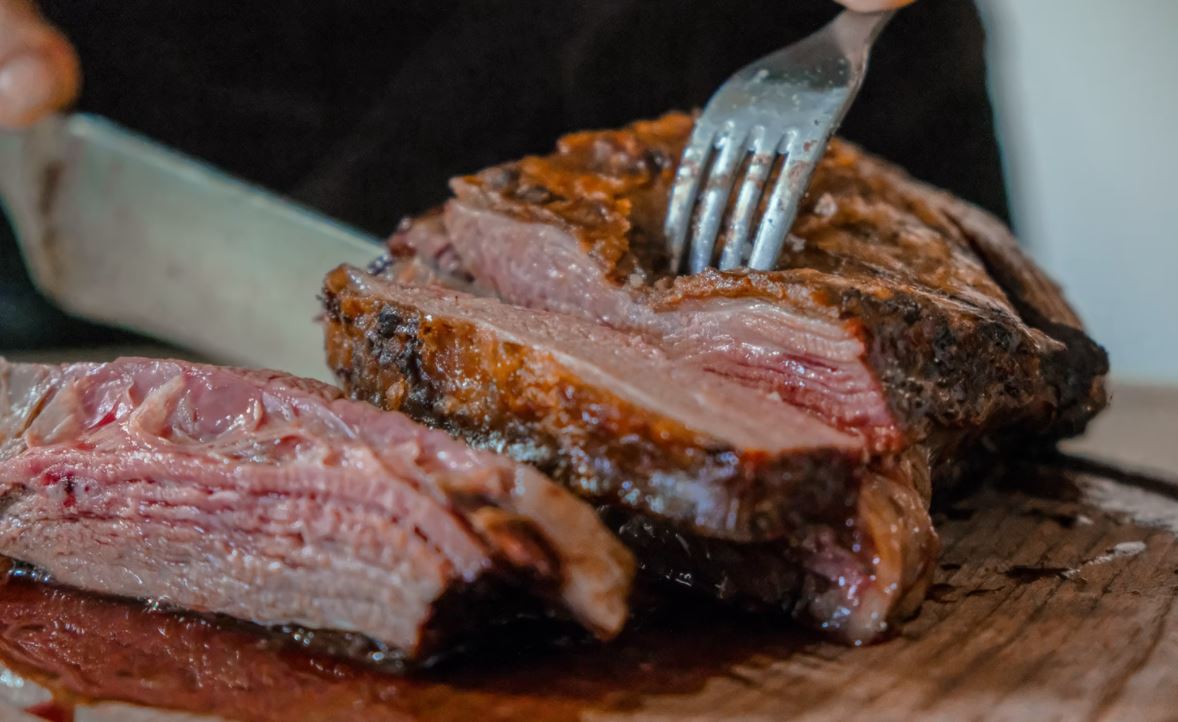
Meats should be thinly sliced or shaved as close to service time as possible. Using a slicer rather than cutting by hand will give better consistency. Slicer settings can be adjusted to make thinner or thicker cuts as required.
Cheeses
The flavour of cheese gets stronger the closer you get to the rind. Therefore, when slicing cheese to place on biscuits for finger food, make sure each piece has part of the rind so that the taste is consistent.
- Use a slicer to slice hard cheeses.
- Use a knife to cube cheeses.
- Use a manual or electronic grater for grating cheese.
Fruits
- Cut the edible parts of the fruit into bite-sized pieces for finger foods and salads.
- Cut fruit into larger pieces and leave the rind on to create a visual impact for fruit platters. Make sure the rind does not have any blemishes.
Vegetables
- Drain preserved (canned or bottled) vegetables on a paper towel before slicing them.
- Use a mandolin to cut neat, uniform slices of carrot, onion, cucumber, etc.
Vegetable Cuts
Rough cuts - Vegetables that aren’t actually eaten as part of the dish are rough cuts. These vegetables are added to stocks and soups in the preparation and cooking stages but are strained and thrown out once their flavour is extracted. ‘Mirepoix’ (pronounced ‘mir-er-pwa’) is the most common rough cut usually made up of carrots, celery, onions and sometimes leeks. It is important that the amounts are even so that one flavour does not dominate. The shape of the cut vegetables is not important from a visual perspective because the vegetables are never used in the finished product.
Precision cuts -You use precision cutting to uniformly slice vegetables. These cuts are specifically named depending on their origin, shape and size. There are different types of cuts that you can use as well. These are the knife skills you can practice with and get a good understanding of. Once mastered, you can move onto more advanced methods of cutting, slicing and dicing including butterflying, deboning, carving, and working with difficult objects. Results come from practice, so get out there and start practising your skills cutting different foods with a range of knife types and sizes.
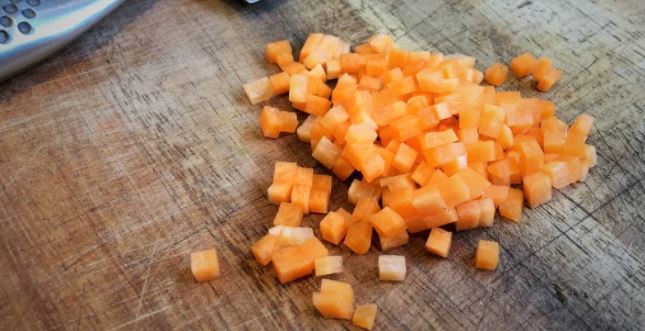
Brunoise dice is the smallest uniform dice. This method is simple and only adds an additional step to the Julienne method. Take your julienne cuts and bunch them up with your hand. Then cut the julienne into equally shaped dice.
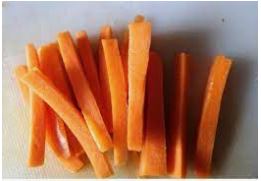
The Jardiniere is used when serving a larger portion of an item such as a vegetable side, to gain height in your dish or to provide appeal to a dish. Start with squaring off the item and slicing it to the thickness desired.
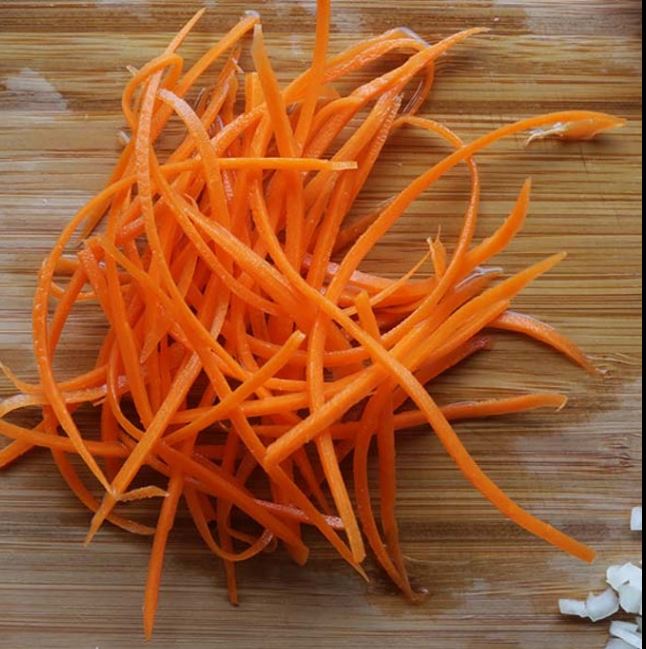
The Julienne cut is a type of stick-shaped cut that is very thin. Cut from a squared off item, you will then slice that item length-wise at a thickness of 1-2mm leaving you with thin rectangular cuts. Then, take the thin slices and apply the same technique to end up with fine even strips.
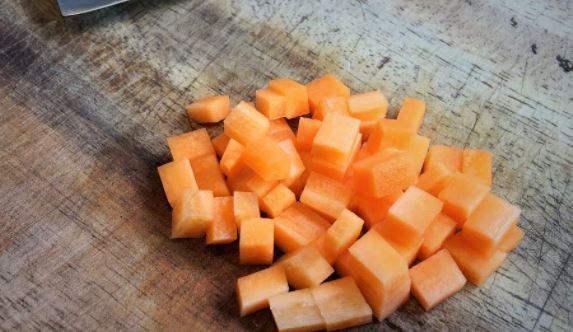
Macedoine is a large dice is primarily used for stews, long-cooking dishes and for mirepoix in stocks. It is relatively quick and looks professional. Dimensions: 12mm X 12mm X 12mm.
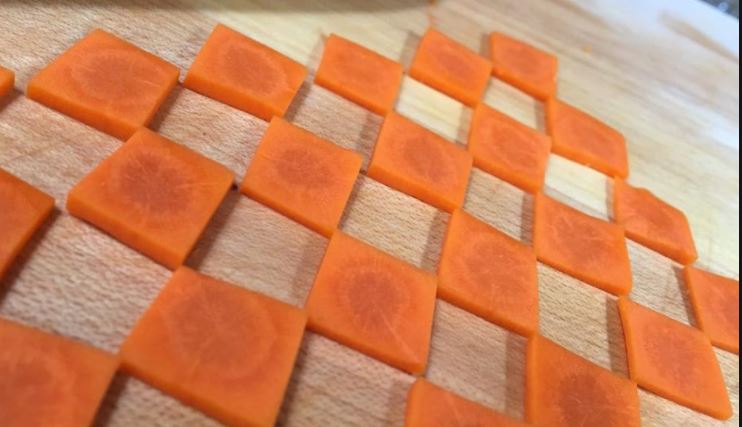
Paysanne is achieved by creating your desired stick-cut size, then slicing thinly to produce a thin square. Typically used for larger cuts, this method can be applied to smaller cuts and dices as well. Dimensions: 12mm X 12mm X 3mm.The chiffonade is used when slicing very thin items such as herbs or leafy vegetables such as spinach.
Cutting en chiffonade is a simple process. Start by stacking the items you are looking to slice. Then roll up the items, producing a cigar-shaped roll. Once it is rolled, start slicing to produce a nice chiffonade suitable for garnishing and other purposes
